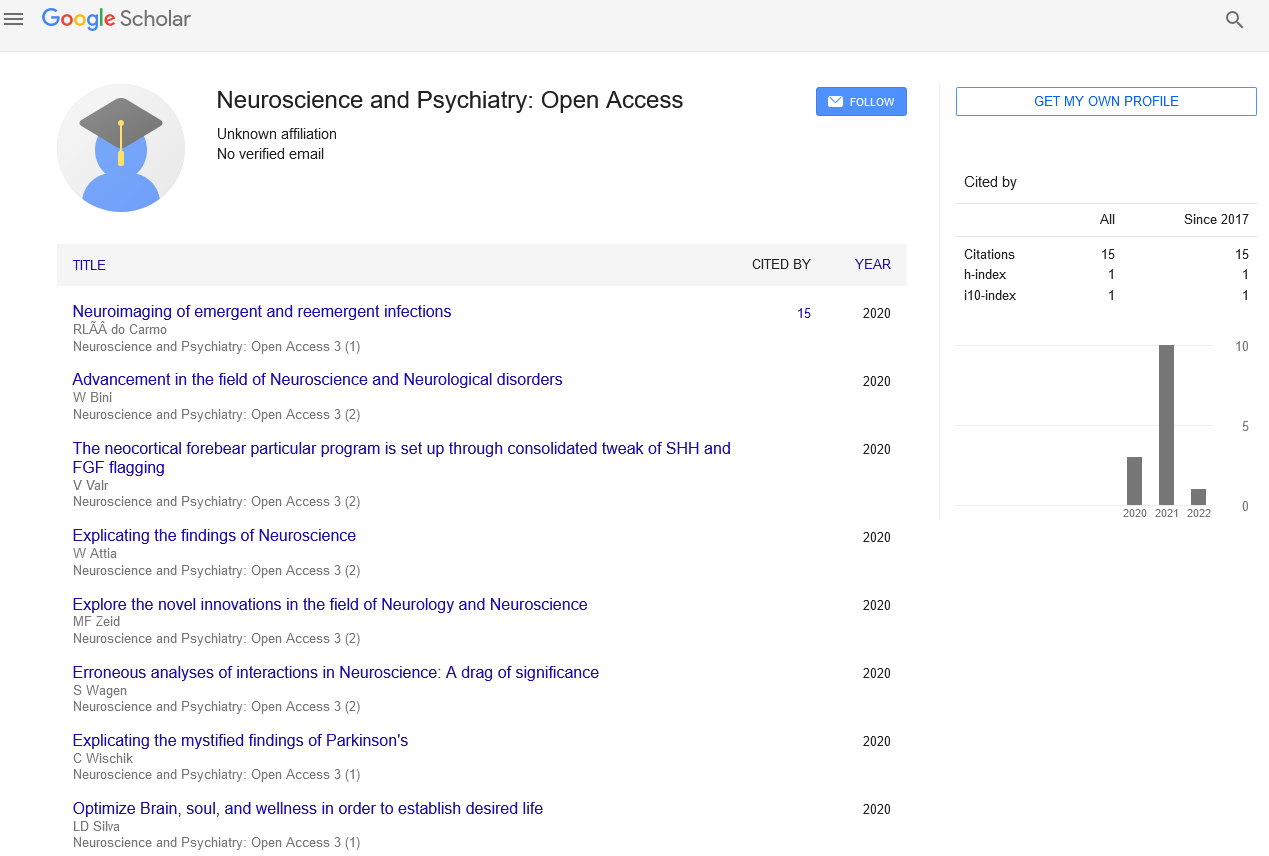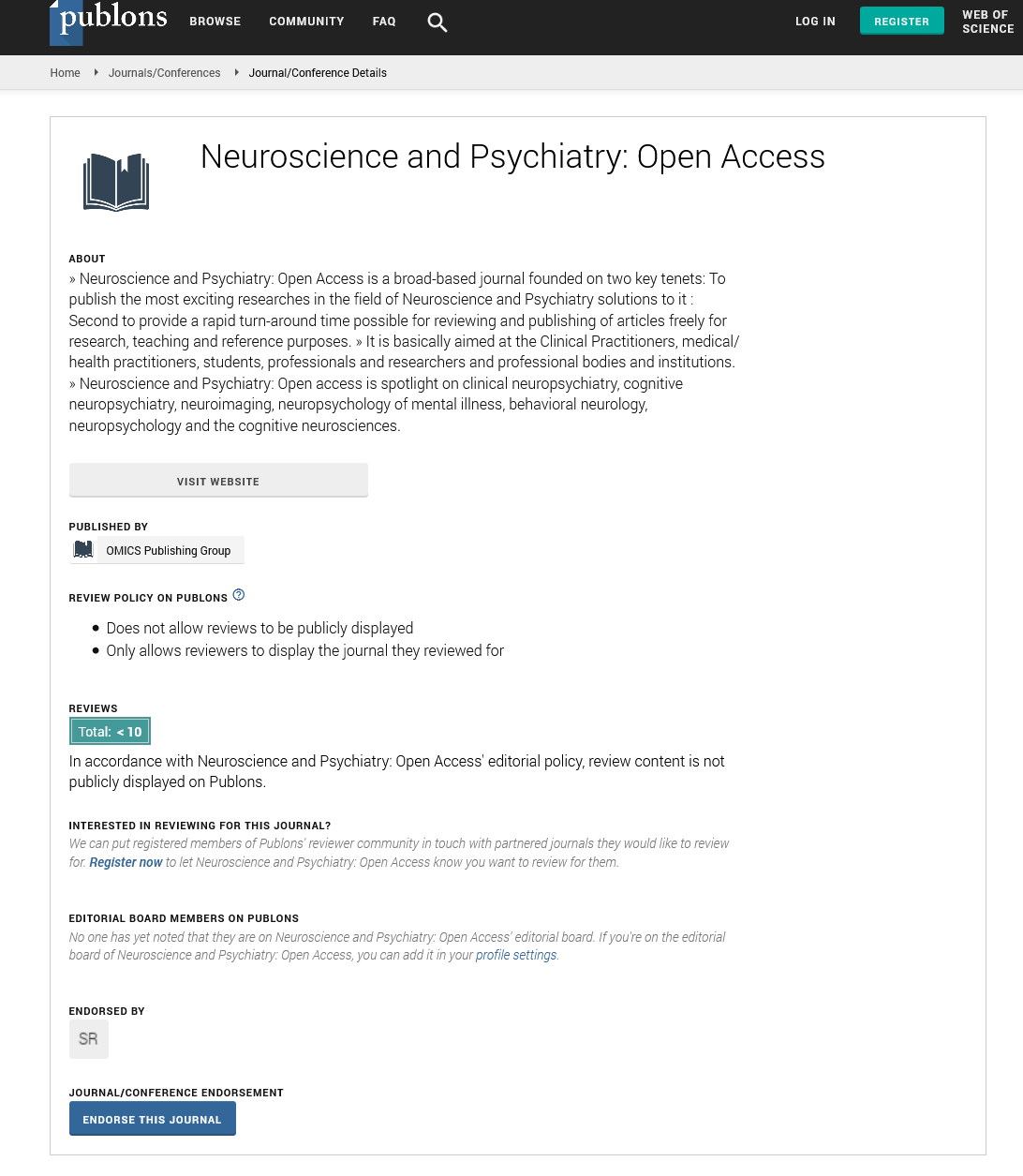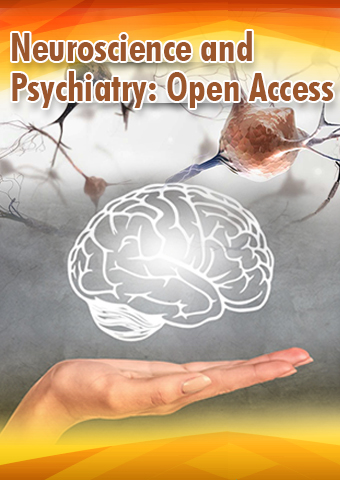Perspective - Neuroscience and Psychiatry: Open Access (2024) Volume 7, Issue 4
Neurofeedback: Applications and Efficacy in ADHD Treatment
- Corresponding Author:
- Jonathan Leung
Department of Neuroscience, Johns Hopkins University, Maryland, USA
E-mail: leung.jon@mayo.edu
Received: 21-06-2024, Manuscript No. NPOA-24-140649; Editor assigned: 25-06-2024, PreQC No. NPOA-24-140649 (PQ); Reviewed: 09-07-2024, QC No. NPOA-24-140649; Revised: 19-07-2024, Manuscript No. NPOA-24-140649 (R); Published: 26-07-2024, DOI: 10.47532/npoa.2024.7(4).242-244
Introduction
Attention-Deficit/Hyperactivity Disorder (ADHD) is a neurodevelopmental disorder characterized by persistent patterns of inattention, impulsivity, and hyperactivity that significantly impair daily functioning and academic performance. While pharmacological interventions and behavioral therapies are commonly used to manage ADHD symptoms, there is growing interest in alternative approaches such as neurofeedback-a non-invasive technique that aims to modify brain activity patterns through operant conditioning. This article explores the applications, mechanisms, and efficacy of neurofeedback in ADHD treatment, highlighting its potential as a complementary therapeutic option.
Description
Understanding neurofeedback
Neurofeedback, also known as EEG biofeedback, is a form of brain training that utilizes real-time displays of brain activity to teach self-regulation of brain function. The technique is based on the principle of operant conditioning, where individuals learn to modulate their brain activity in response to visual or auditory feedback provided by a computer-based program.
During a neurofeedback session, electrodes are placed on the scalp to record electrical activity (EEG) from specific brain regions implicated in ADHD, such as the prefrontal cortex and anterior cingulate cortex. The EEG signals are processed in real-time and presented to the individual as visual or auditory cues, such as a video game character moving or a tone changing in pitch. By learning to control these cues through relaxation techniques or cognitive strategies, individuals can enhance self-regulation of attention, impulsivity, and arousal levels.
Mechanisms of action
The mechanisms underlying neurofeedback’s efficacy in ADHD treatment are multifaceted and not yet fully understood. Proposed mechanisms include:
Neuroplasticity: Neurofeedback may promote neuroplastic changes in brain networks involved in attention and executive function. Through repeated practice and reinforcement, individuals may strengthen neural pathways associated with sustained attention and impulse control, leading to lasting improvements in ADHD symptoms.
Self-regulation: Neurofeedback trains individuals to self-regulate cortical arousal and cognitive processes by providing immediate feedback on brain activity. Over time, this self-regulation may generalize to real-world situations, improving attentional control and behavioral inhibition in daily life.
Normalization of brain activity: Individuals with ADHD often exhibit atypical patterns of brain activity, such as excess theta (low-frequency) and reduced beta (high-frequency) EEG activity in frontal regions. Neurofeedback aims to normalize these patterns, promoting more balanced and efficient brain functioning associated with improved attentional performance.
Applications of neurofeedback in ADHD treatment
Neurofeedback protocols for ADHD typically target specific EEG frequency bands, such as increasing beta activity (12-20 Hz) associated with alertness and focused attention, while decreasing theta activity (4-8 Hz) linked to drowsiness and distractibility. Treatment protocols are tailored to individual EEG profiles and clinical presentation, with sessions ranging from several weeks to months depending on symptom severity and treatment response.
Research studies and clinical trials have explored various applications of neurofeedback in ADHD treatment, demonstrating promising results in:
Attention and focus: Neurofeedback has been shown to improve sustained attention, selective attention, and vigilance in individuals with ADHD. By enhancing beta activity and reducing theta activity, neurofeedback training may enhance cognitive control and attentional stability.
Impulsivity and hyperactivity: Reductions in impulsivity and hyperactivity symptoms have been reported following neurofeedback interventions. By modulating cortical arousal and self-regulation mechanisms, neurofeedback may promote behavioral inhibition and reduce impulsive behaviors characteristic of ADHD.
Executive function: Executive functions such as working memory, planning, and cognitive flexibility are often impaired in ADHD. Neurofeedback training may enhance executive function skills by optimizing frontal lobe activity and improving neural efficiency in task-related networks.
Behavioral and academic outcomes: Improved behavioral regulation and academic performance have been observed in children and adolescents receiving neurofeedback for ADHD. Enhanced self-control and reduced classroom disruptions may contribute to better school functioning and social interactions.
Efficacy and evidence base
While preliminary studies and meta-analyses suggest positive effects of neurofeedback on ADHD symptoms, the evidence base remains heterogeneous and subject to variability in study design, participant characteristics, and outcome measures. Key findings include:
Meta-analytic evidence: A meta-analysis by Arns indicated moderate to large effect sizes for neurofeedback in improving ADHD symptoms, with significant reductions in inattention and hyperactivity compared to control conditions.
Long-term benefits: Longitudinal studies suggest that gains achieved through neurofeedback training may endure beyond the intervention period, highlighting the potential for lasting improvements in ADHD symptomatology.
Individualized treatment response: Response to neurofeedback therapy varies among individuals, influenced by factors such as age, ADHD subtype, comorbidities, and baseline EEG profiles. Personalized treatment protocols tailored to individual neurobiological markers may optimize therapeutic outcomes.
Combination therapies: Integrative approaches combining neurofeedback with standard treatments, such as medication or behavioral therapy, may enhance treatment efficacy and address diverse symptom domains in ADHD.
Challenges and considerations
Despite its potential benefits, neurofeedback faces several challenges and considerations in clinical practice:
Methodological rigor: Standardization of neurofeedback protocols, electrode placement, and outcome measures is essential to ensure replicability and validity across studies.
Treatment accessibility: Accessibility to neurofeedback services may be limited by cost, availability of trained practitioners, and insurance coverage, posing barriers to widespread adoption.
Patient engagement: Engagement and motivation are critical factors in neurofeedback success, requiring active participation and commitment from individuals undergoing treatment.
Evidence-based practice: Continued research is needed to elucidate optimal neurofeedback protocols, predictors of treatment response, and long-term sustainability of therapeutic gains in ADHD management.
Future directions
Future research directions in neurofeedback for ADHD treatment include:
Neurobiological markers: Identification of neurobiological markers predictive of neurofeedback response and treatment outcomes.
Neuroimaging studies: Integration of neuroimaging techniques, such as functional MRI (fMRI), to elucidate neural mechanisms underlying neurofeedback effects on brain function and connectivity.
Large-scale trials: Conducting large-scale randomized controlled trials to further establish efficacy, durability, and cost-effectiveness of neurofeedback as a standalone or adjunctive therapy for ADHD.
Personalized medicine: Advancing personalized medicine approaches to tailor neurofeedback interventions based on individual EEG profiles, symptom profiles, and treatment goals.
Conclusion
Neurofeedback represents a promising therapeutic approach in the management of ADHD, offering a non-pharmacological option to enhance self-regulation of attention, impulsivity, and hyperactivity. By harnessing principles of operant conditioning and neuroplasticity, neurofeedback aims to optimize brain function and improve behavioral outcomes in individuals with ADHD. While ongoing research and clinical advancements continue to refine its applications and efficacy, neurofeedback holds potential as a complementary treatment modality that empowers individuals to achieve better symptom control and functional independence in daily life. As the field of neurofeedback evolves, interdisciplinary collaboration and evidencebased practice will be essential in realizing its full therapeutic potential in ADHD care.


